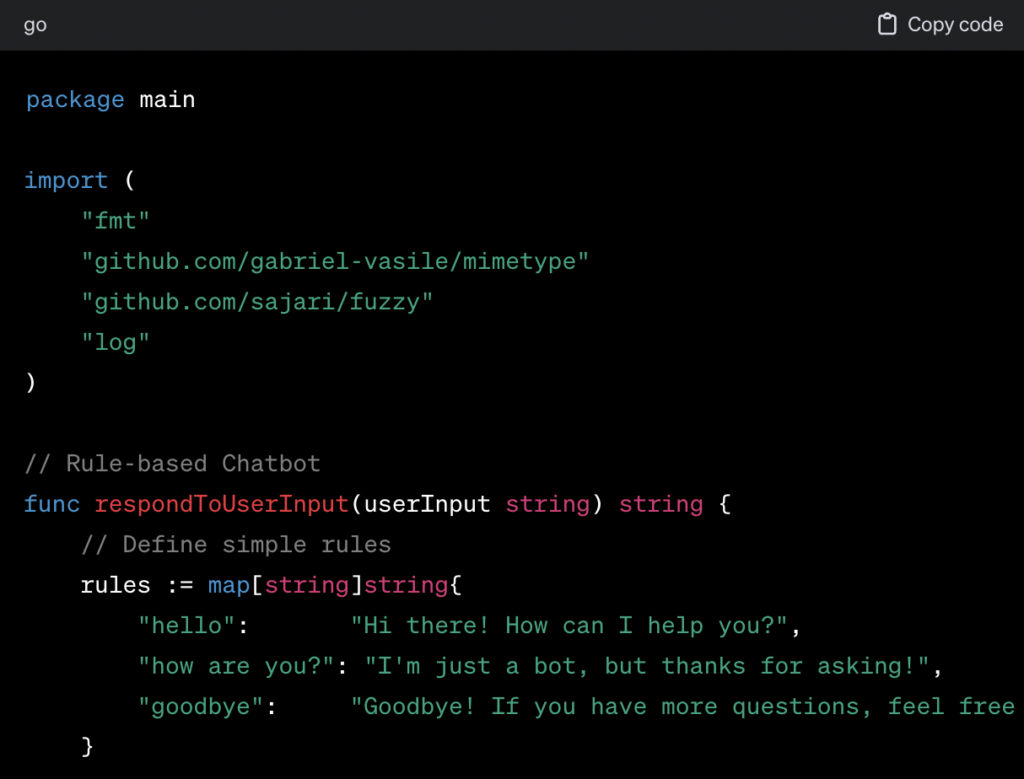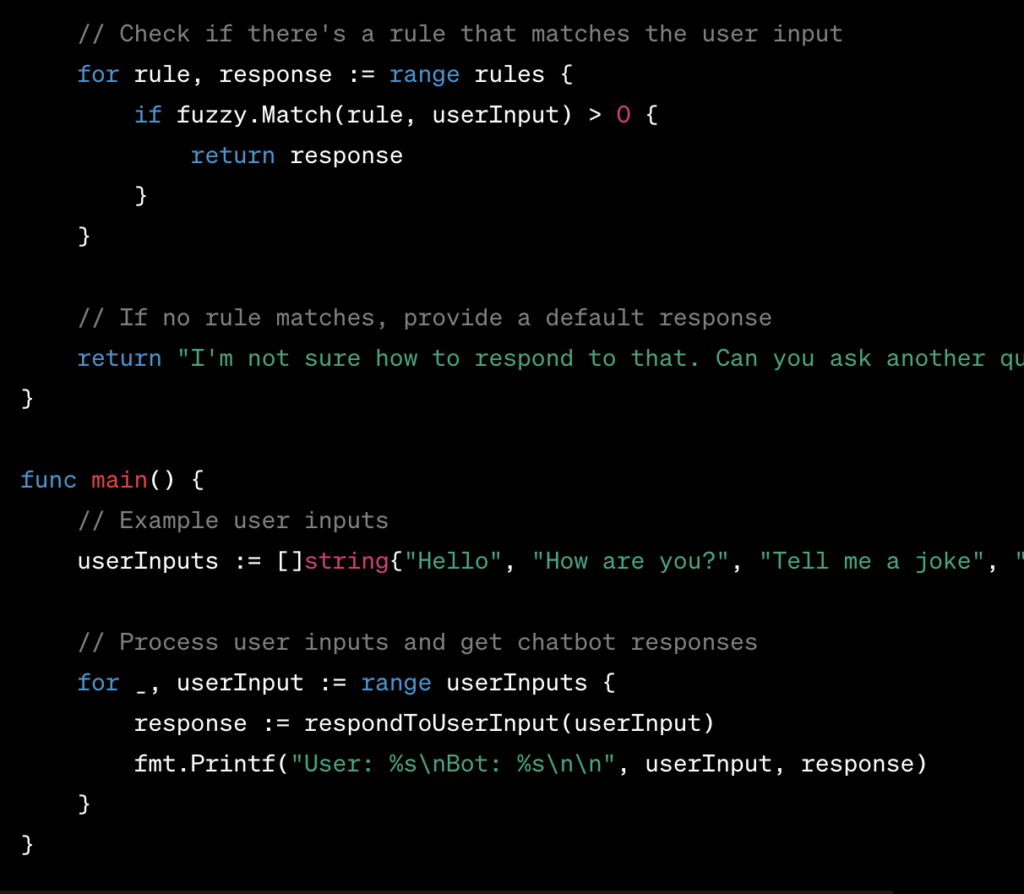The benefits of building chatbots with Golang
26/12/2023
1.05k
Table of Contents
Hi-tech lovers, welcome back to SupremeTech’s blog. This week, we’ll discuss Golang and how it’s used to build chatbots. Golang, also known as Go, has increasingly become a language of choice for developing chatbots due to its simplicity, efficiency, and suitability for concurrent operations. This article will explore the language’s role and the natural language processing (NLP) libraries and frameworks that empower these conversational agents.
See more:
- Cross-Platform Mobile Development with Golang: Build Native Apps
- Automating Deployment of GoLang Applications

The Rise of Chatbots
Before discussing how Golang is optimized to build Chatbots, let’s have a quick overview of Chatbots and their emergence as a dominant force in customer services.
Chatbots have evolved from basic rule-based systems to intelligent conversational agents capable of understanding and responding to natural language. Businesses across industries integrate chatbots into their applications to engage users, provide instant support, and streamline various processes.
The development process should consider several requirements, namely NLP capabilities, multi-channel support, data security, for a chatbot to work well and improve productivity.
Why Golang for Chatbots?
- Concurrency: Golang’s native support for concurrency through Goroutines makes it well-suited for handling multiple chatbot interactions simultaneously. This allows for efficient processing of user requests and responses, contributing to a seamless conversational experience.
- Performance: Golang’s speed and efficiency are crucial for real-time communication. Chatbots built with Golang can handle a large number of concurrent users without compromising on performance.
- Scalability: Golang’s design facilitates the creation of scalable systems. As chatbot usage grows, Golang’s scalability ensures that the application can handle increased user demands without sacrificing responsiveness.
- Ease of Deployment: Golang compiles into a standalone binary, simplifying the deployment of chatbot applications. This ease of deployment is advantageous, especially when integrating chatbots into existing systems or cloud environments.
- Community Support: Golang has a growing and active community that contributes to developing libraries and tools. This support ensures Golang developers can access resources and assistance when building and maintaining chatbot applications.
Learn more: Golang for DevOps: Empowering Infrastructure as Code and Automation
Natural Language Processing in Golang
Natural language processing (NLP) is a key component of chatbot development. It enables bots to understand and interpret user input in a way that mimics human conversation. In the Golang ecosystem, several NLP libraries and frameworks empower developers to integrate sophisticated language processing capabilities into their chatbots.
- github.com/robertkrimen/otto: Otto is a JavaScript interpreter written in Golang. While not an NLP library per se, it enables developers to integrate JavaScript-based NLP solutions into their Golang chatbots. This flexibility allows for incorporating existing JavaScript NLP libraries or custom scripts.
- github.com/xtgo/set: SET (Simple English Text) is a Golang library for basic text processing. It provides functions for stemming, stop-word removal, and other text processing tasks, making it useful for enhancing chatbots’ language understanding capabilities.
- github.com/advancedlogic/go-freeling: Go-Freeling is a Golang wrapper for the Freeling library, a powerful open-source language analysis tool. It offers functionalities such as tokenization, part-of-speech tagging, and syntactic analysis, making it suitable for advanced NLP tasks in Golang-based chatbots.
Building a Simple Golang Chatbot
Let’s walk through a basic example of building a Golang chatbot using the Chatterbot library. This example demonstrates a rule-based approach where the chatbot responds based on predefined rules:


This simple chatbot uses a set of rules to respond to user inputs. The fuzzy package from github.com/sajari/fuzzy is employed to handle variations in user input, providing a basic level of flexibility.
Building chatbots with Golang offers a powerful and efficient way to create conversational interfaces. Golang’s concurrency, performance, and scalability make it a practical choice for real-time communication. Additionally, with the availability of NLP libraries and frameworks, developers can enhance chatbot capabilities to understand and respond to natural language, providing users with a more engaging and human-like experience. As the field of chatbot development continues to evolve, Golang remains a valuable tool for crafting innovative and responsive conversational agents.
SupremeTech has been researching Chatbots and delivering Golang development services with custom solutions. Contact us for a free consultation!
Related Blog





















